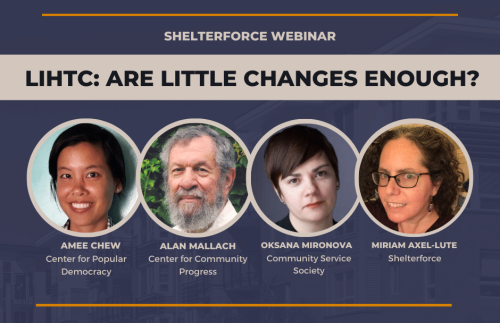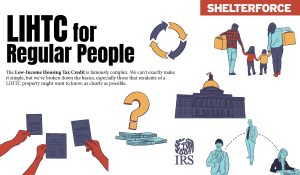
Topic
Policy
The rules of the game—and the attitudes of the players—have an enormous effect on community development work at all levels. Here we look at some of the conversations about how to shift that policy for the better.
The Latest

What the Grants Pass Case Means—For All of Us
In an era of runaway housing costs, the Supreme Court is going to decide whether it's illegal to not be able to afford them.
Explore Articles in this Topic
Search & Filter Within this Topic
filter by Content Type
filter by Date Range
search by Keyword

Targeting First-Generation Homebuyers Is a Great Way to Direct Downpayment Assistance—And It Could Be Better
The proposed program could shrink the racial homeownership gap while serving a wide cross-section of people. But it only addresses some of the results of past discrimination.

Blockbusting the Big Boys: Bill Would Ban Hedge Funds from Owning Single-Family Homes
The End Hedge Fund Control of American Homes Act is an ambitious attempt to keep private equity’s influence out of single-family homes. If passed, the bill will need ownership transparency to be effective.

LIHTC: Are Little Changes Enough? A Shelterforce Webinar
There are reforms and expansions of Low-Income Housing Tax Credit afoot. But some in the field argue that we need to change the tax credit model of financing housing more deeply—or move away from it entirely. Join scholars and organizers as they discuss these issues and explore a path forward.

VA’s Work to End Veteran Homelessness Is a Nationwide Model. Can It Translate for Civilians?
The VA’s program doesn’t completely meet the needs of all unhoused veterans, but it’s close. That stands in stark relief to the non-veteran population.

How the New CRA Rule Will Help, and Where It Falls Short
The assessments that evaluate a bank’s lending practices have improved, but there are several missed opportunities for reform. For one, the new rules won’t incorporate a racial analysis into lending examinations.

A Fifth of This Town’s Homes Were Saved from Demolition—And Kept Affordable
The decision to demolish Wellston’s public housing had already been made when residents and the mayor decided to fight for it, but persistence, luck, and a financing structure with some unusual twists brought them back from the brink.

How to Really Reform the Low-Income Housing Tax Credit Program
Adding more credits and making tweaks do not actually address some of the major weaknesses of the program. We should be bolder.

How We Can Bring Vienna’s Housing Model to the U.S.
Legislators visited Vienna to learn about the city’s social housing program. Here’s how they say their states’ housing crises would benefit from similar policies.


The FSS Program Was Expanded Beyond Public Housing Authorities—Here’s How It’s Going
In 2018, the Family Self-Sufficiency Program was expanded to privately owned properties receiving project-based rental assistance. Here’s a look at how early adopters have used the program to support residents, and the lessons they learned along the way.

LIHTC Right of First Refusal Is Still Under Attack
Three years after our initial story, aggressive investors are still suing LIHTC general partners to profit off of what should be affordable housing. But one legal decision, along with proposed legislation, could help protect the right of first refusal.

LIHTC for Regular People
The Low-Income Housing Tax Credit is famously complex. We can’t exactly make it simple, but we’ve broken down the basics, especially those that residents of a LIHTC property might want to know, as clearly as possible.
